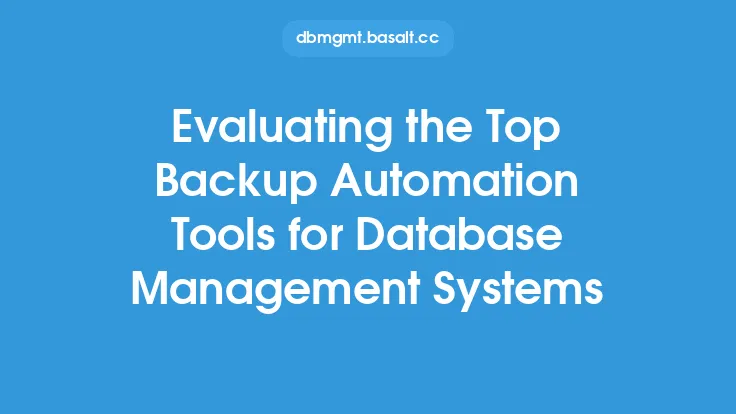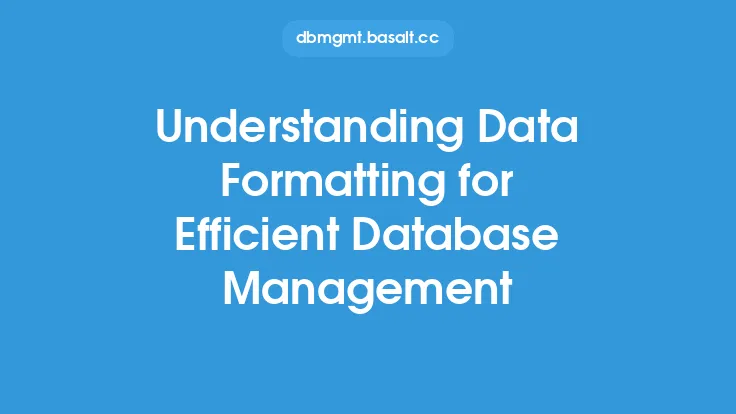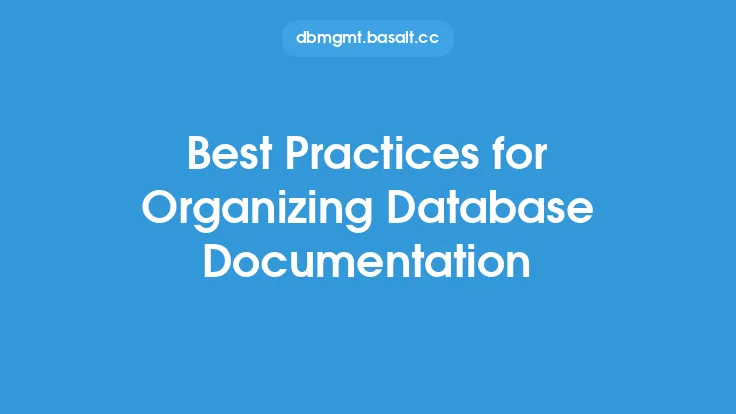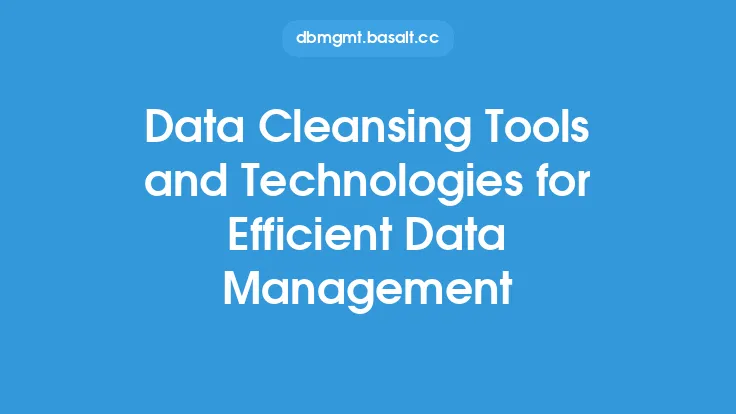Database documentation is a critical aspect of database administration, as it provides a clear understanding of the database structure, relationships, and dependencies. Effective database documentation is essential for efficient management, as it enables database administrators to manage, maintain, and optimize the database with ease. One of the key components of database documentation is the use of database documentation tools. These tools help to automate the process of creating and maintaining database documentation, making it easier to manage complex databases.
Introduction to Database Documentation Tools
Database documentation tools are software applications that help to create, manage, and maintain database documentation. These tools can be used to document database structures, relationships, and dependencies, as well as to track changes and updates to the database. Database documentation tools can be categorized into several types, including data modeling tools, database design tools, and documentation generation tools. Data modeling tools, such as Entity-Relationship Diagram (ERD) tools, help to create visual representations of the database structure. Database design tools, such as database schema management tools, help to manage the database schema and track changes. Documentation generation tools, such as document generators, help to create documentation from the database schema and other sources.
Features of Database Documentation Tools
Database documentation tools typically have a range of features that make them useful for database administrators. Some common features include:
- Automated documentation generation: This feature allows users to generate documentation from the database schema and other sources, reducing the need for manual documentation.
- Data modeling: This feature allows users to create visual representations of the database structure, making it easier to understand complex relationships and dependencies.
- Database design management: This feature allows users to manage the database schema and track changes, making it easier to maintain the database.
- Collaboration tools: This feature allows multiple users to collaborate on database documentation, making it easier to work in teams.
- Version control: This feature allows users to track changes to the database documentation, making it easier to manage different versions.
Types of Database Documentation Tools
There are several types of database documentation tools available, each with its own strengths and weaknesses. Some common types include:
- Data modeling tools: These tools, such as ERwin and PowerDesigner, help to create visual representations of the database structure.
- Database design tools: These tools, such as DBDesigner and SchemaSpy, help to manage the database schema and track changes.
- Documentation generation tools: These tools, such as DocuWiki and Confluence, help to create documentation from the database schema and other sources.
- Integrated development environment (IDE) tools: These tools, such as Eclipse and Visual Studio, provide a range of features, including data modeling, database design management, and documentation generation.
Benefits of Using Database Documentation Tools
Using database documentation tools can have several benefits, including:
- Improved efficiency: Database documentation tools can automate many of the tasks involved in creating and maintaining database documentation, freeing up time for more strategic activities.
- Increased accuracy: Database documentation tools can help to reduce errors and inconsistencies in database documentation, making it more accurate and reliable.
- Enhanced collaboration: Database documentation tools can provide collaboration features, making it easier for teams to work together on database documentation.
- Better decision-making: Database documentation tools can provide a clear understanding of the database structure and relationships, making it easier to make informed decisions about database management and optimization.
Choosing the Right Database Documentation Tool
Choosing the right database documentation tool can be a complex task, as there are many tools available, each with its own strengths and weaknesses. When choosing a tool, consider the following factors:
- Features: Consider the features that are required, such as data modeling, database design management, and documentation generation.
- Ease of use: Consider the ease of use of the tool, as well as the level of technical expertise required.
- Scalability: Consider the scalability of the tool, as well as its ability to handle large and complex databases.
- Integration: Consider the integration of the tool with other tools and systems, such as IDEs and version control systems.
- Cost: Consider the cost of the tool, as well as any ongoing maintenance and support costs.
Best Practices for Using Database Documentation Tools
To get the most out of database documentation tools, follow these best practices:
- Use the tool consistently: Use the tool consistently to create and maintain database documentation, to ensure that the documentation is accurate and up-to-date.
- Keep the tool up-to-date: Keep the tool up-to-date with the latest features and updates, to ensure that the documentation is accurate and reliable.
- Use collaboration features: Use collaboration features to work with teams and stakeholders, to ensure that the documentation is accurate and consistent.
- Use version control: Use version control to track changes to the database documentation, to ensure that different versions can be managed and maintained.
- Monitor and report: Monitor and report on the use of the tool, to ensure that it is being used effectively and efficiently.





